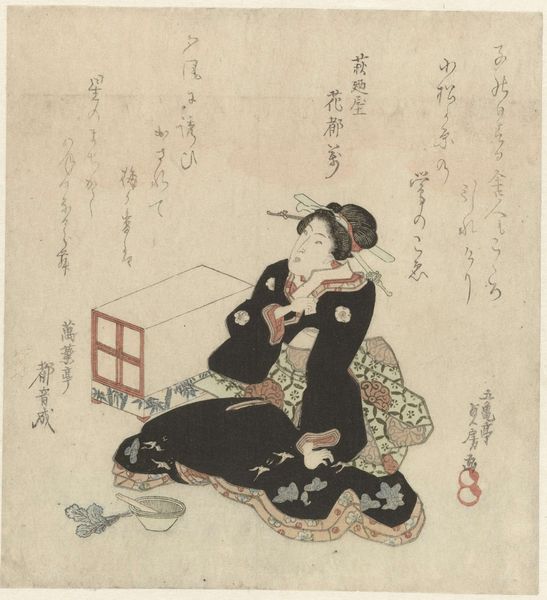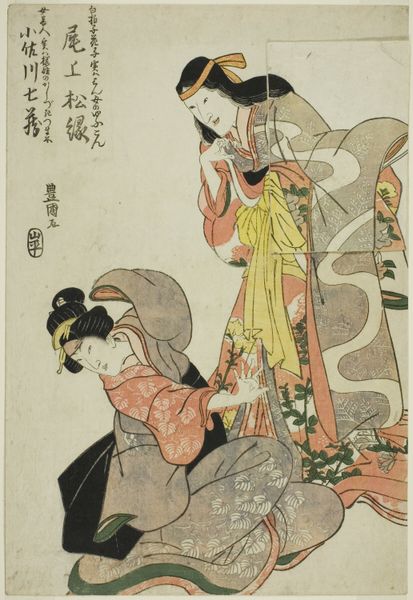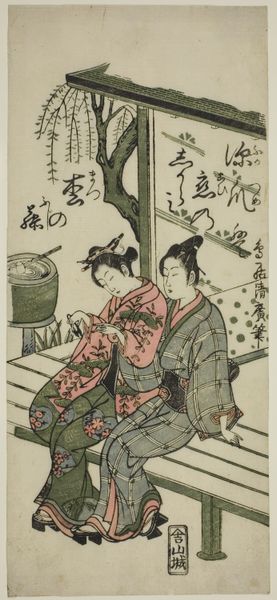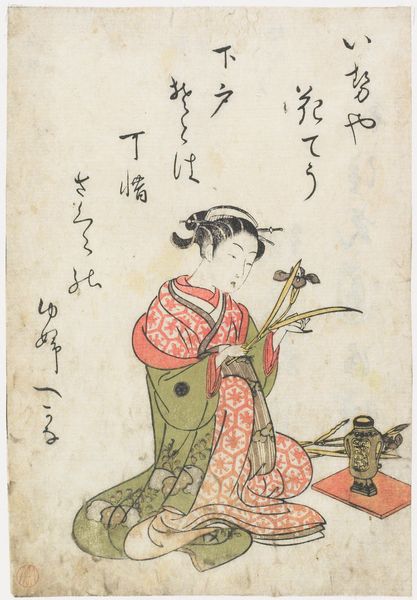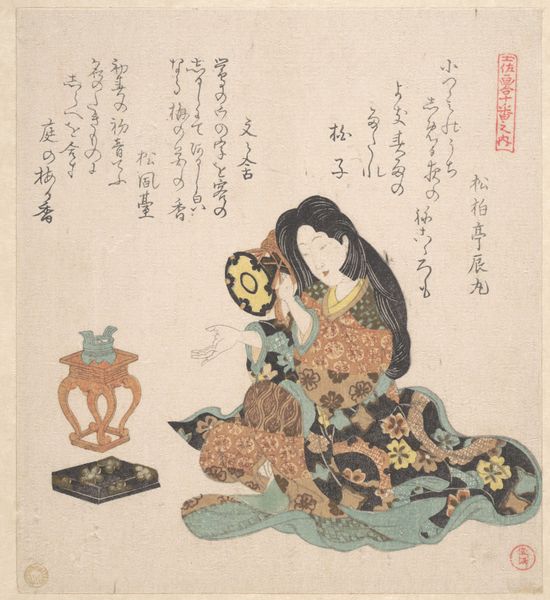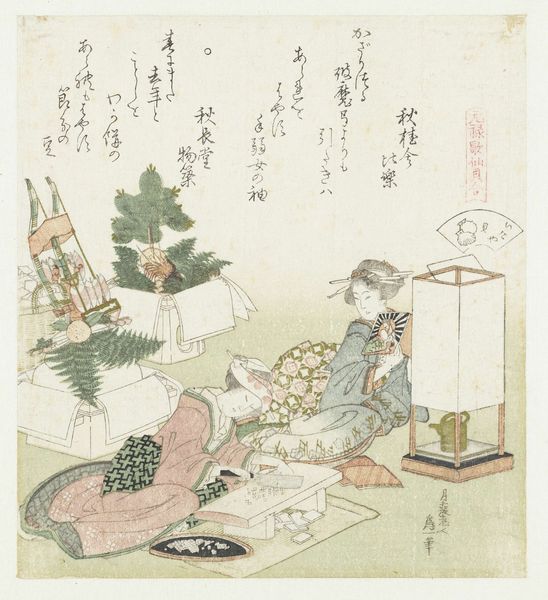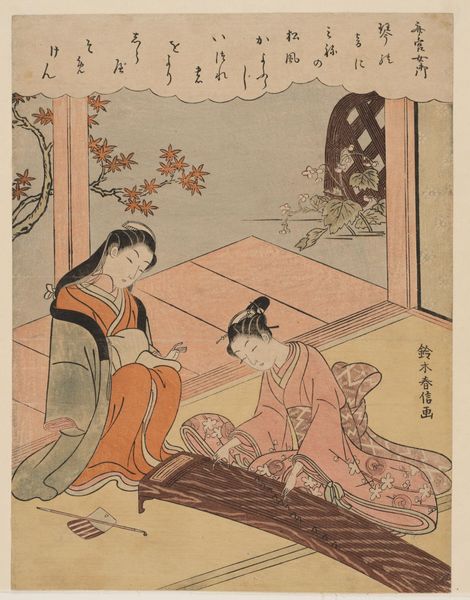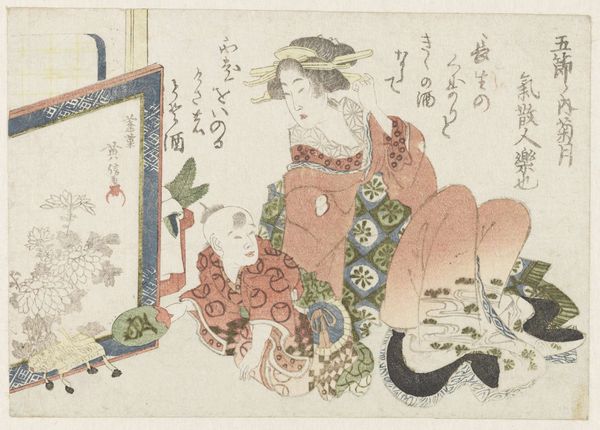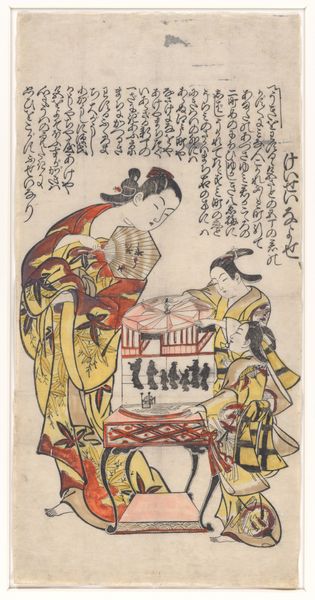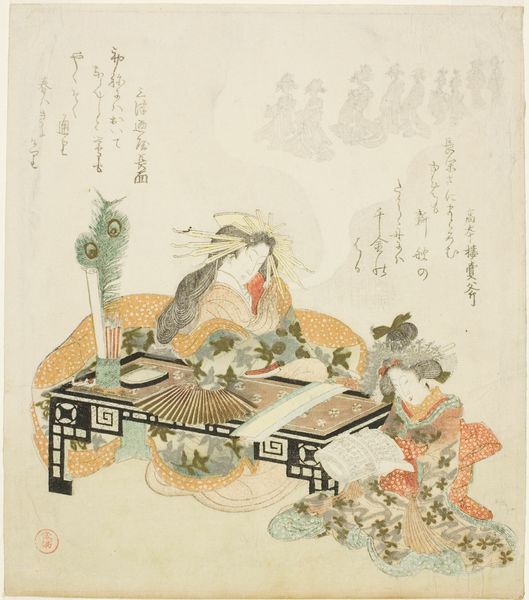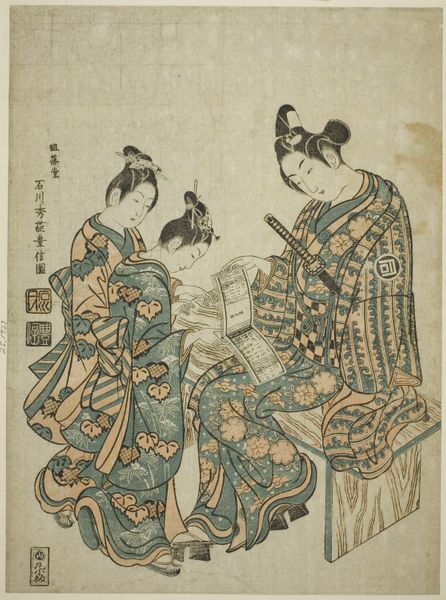
print, ink, woodblock-print
#
portrait
# print
#
asian-art
#
ukiyo-e
#
japan
#
ink
#
woodblock-print
#
genre-painting
Dimensions: 8 x 7 3/16 in. (20.3 x 18.3 cm) (image, sheet)17 15/16 x 14 in. (45.56 x 35.56 cm) (mat, Size I)
Copyright: Public Domain
Editor: So, we’re looking at "Sugoroku," a woodblock print by Totoya Hokkei, created around the early 1820s. I’m immediately struck by the quiet intimacy of the scene. It’s not a grand, public moment, but rather a glimpse into a personal, perhaps domestic, activity. How do you see this work functioning within the broader art and social context of its time? Curator: This print gives us a peek into the leisure activities of Edo period Japan. The game itself, sugoroku, which translates to "double sixes," was hugely popular across different social classes. But, Hokkei isn't simply showing us a game; he’s displaying a constructed social image. Ukiyo-e prints like this weren't just art, but commodities within a market shaped by publishers, artists, and the tastes of urban consumers. What do you think the depiction of these women playing sugoroku suggests about their social standing? Editor: That's a great question. Their elaborate clothing and hairstyles seem to suggest a certain level of wealth and status. They definitely appear to be enjoying leisure time. Curator: Exactly! Prints featuring women engaged in leisure activities allowed viewers, often men, to consume idealized visions of female beauty and domesticity. Hokkei capitalizes on that voyeuristic aspect that circulated images and gendered constructs of female pleasure and beauty. The details in the print – the pattern of their kimonos, even the arrangement of the game pieces – all contributed to a marketable and culturally specific representation. Editor: I see now; it's a snapshot, but also a curated image within a complex social system. It’s not just a simple portrayal of everyday life but represents much more than that. Curator: Precisely. We’ve examined how cultural expectations and economic forces played a significant role in framing what's deemed valuable and beautiful in art. Editor: This discussion made me appreciate the socio-historical aspect of what seemed to be just a snapshot. Thanks for pointing that out! Curator: And thank you, for prompting this discussion! Analyzing these prints provides key insight into how art shapes and reflects our cultures.
Comments
No comments
Be the first to comment and join the conversation on the ultimate creative platform.

